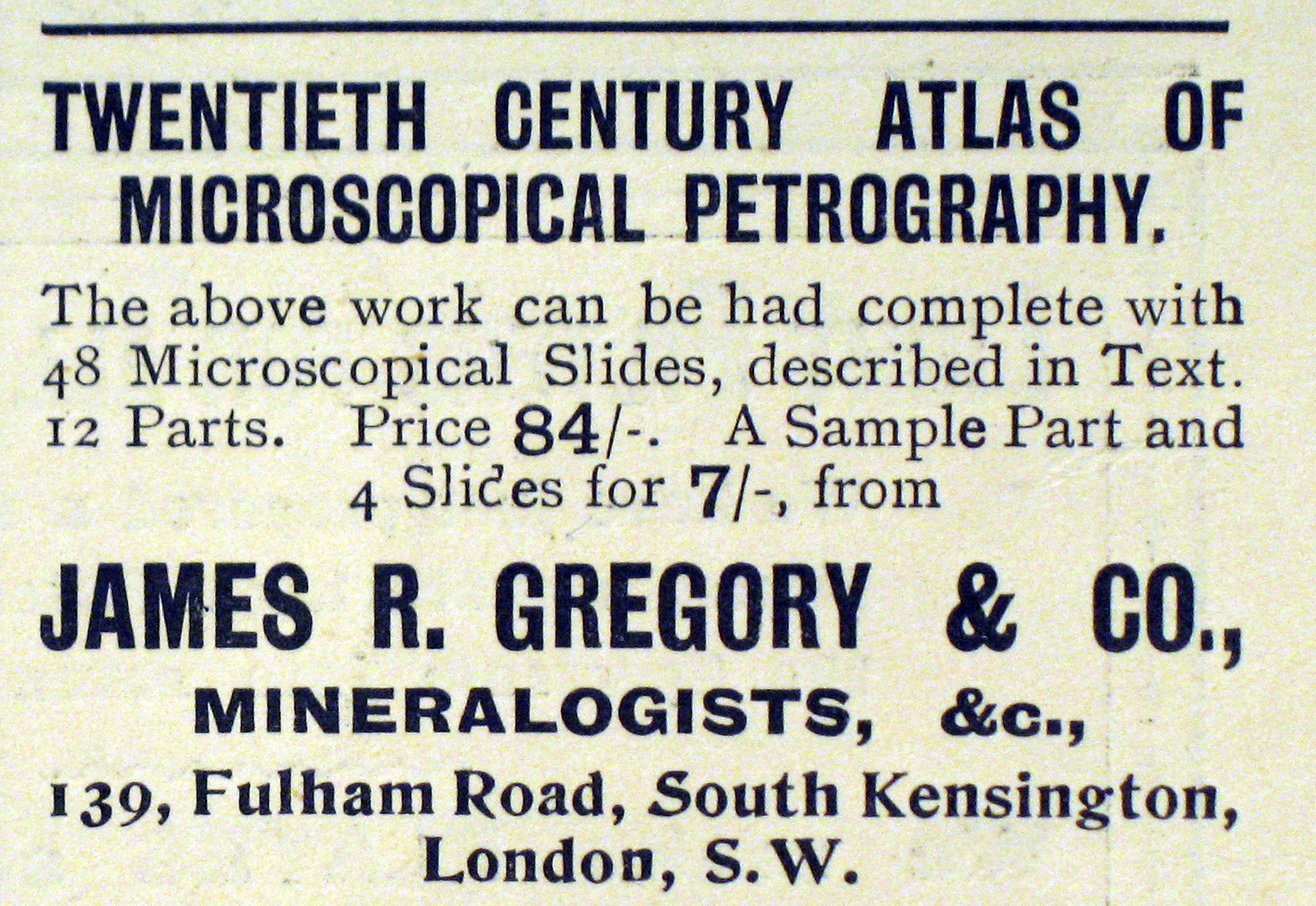|
Ady has been a somewhat enigmatic figure in the history of microscopical preparations. John Ernest Ady was acknowledged as the author of much of the text of the first series of Studies in Microscopical Science, edited by the famous mounter Arthur C Cole, and published in 1883. He also wrote some of the text of volume two, and the text of The Methods of Microscopical Research at the end of this volume, published in 1884. He is not mentioned in any of the other volumes, perhaps because he formed an association with A J Doherty of the Victoria University in Manchester, to produce Popular Studies in Comparative Histology , also in 1884: this very closely followed the Cole plan of issuing sets of slides with lithographed details! In the same year he worked with Thomas Bolton, on biological material. He seems to have set up a laboratory in London for mainly petrographical preparations at the end of 1883, in cooperation with H Hensoldt. They issued slides with explanatory material during 1884, intending to provide a series of 24, but Science Gossip noted in 1887 that nothing more of the series had been heard of for two years, and so it was presumed discontinued. [Cole complained that Ady had published Cole's "exposure method" of preparing minerals as his [Ady's] own].
In 1906 the twentieth century atlas was published by Thomas Murby "through the laboratory of James R Gregory & Co". The author is stated clearly on the title-page as being E Howard Ady. There is no inherent clue as to if the different name is identical with John Ernest Ady, but on page xxviii of the introduction Ady makes plain that he had been writing for some years on microscopical matters.
Steve Gill has now shed light on the man, by trawling census and many other records, and his findings make interesting reading! Ady [sometimes spelt Adye] was born about 1857 in Moulmein in Burma, and by 1881 [recorded as Ernest Ady] lodged near Birmingham, where he demonstrated in biology/geology at the then recently-founded Mason Science College [to be incorporated into the University of Birmingham in 1900]. He seems to have been a graduate, and by 1891 lodged in Islington [recorded as J E Ady]. In 1901 he is listed as residing in Fulham [recorded as Ernest Howard Adye], had a wife Elizabeth [born in Aberdeen about 1855], and a son William D [born in Camberwell about 1894]. He remained in the Greater London area, and besides the Atlas with which we are mainly concerned, he wrote other works on lithology, economic geology of an Indian state [Navangar], and also of another [Porbandar], this last in 1917.
To return to the present Atlas: in 1906 Thomas Murby was becoming established as a supplier of geological specimens and of microscopical mounts of them, and his company continued until WW2. James R Gregory [c1832-1899] was in a similar business from about 1850, and it was his son A G F Gregory , who moved the firm to 139 Fulham Road on the death of his father. He soon absorbed other firms in the same business, including S Henson of Regent Street, Russell & Shaw, and F H Butler of Brompton Road: it was thus the younger Gregory with whom Ady worked to prepare the Atlas now reproduced. This is an excessively rare work, issued in parts: this usually means that very few complete sets survive. However, a gentleman from Cleethorpes offered a complete set of the 48 rock sections for sale, in an advertisement in 1907, from which it seems that the original cost was four guineas.

The sheer effort required to produce a supply of such mounts at regular intervals, and to provide the accompanying text with photomicrograph and explanatory drawing, would have required the resources of an well-established company, and perhaps few others than Gregory & Co would have been able to undertake such a series. The result is really a tour-de-force, within the limits of knowledge of the time. The text is apposite, well supplied with literature references, and the quality of photomicrographs and drawings is exemplary. It remains a much sought-after publication, and the discovery of a set of the text in excellent condition enabled Steve Gill to suggest to me its republication as our next archival CD.
The original page size was 10¾ x 7½ inches: for digitisation the relative size of the margins was reduced so as to make the text area as large as possible.
Two selections of the mounts are reproduced below, one of thin sections and the other of thick opaque specimens. The labels are highly characteristic, and were obviously intended to give an air of quality to the slides!


|

 Return to Quekett Little Imp Archive
Return to Quekett Little Imp Archive





